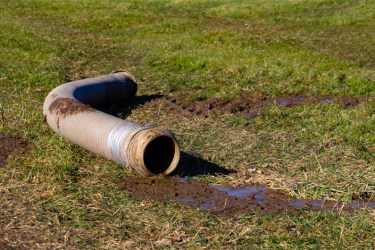By Tom Gill
Agriculture accounts for approximately 87% of UK ammonia emissions. The Government’s Clean Air Strategy implement regulation to minimise the impact of ammonia from dairy and intensive beef producers.
The biggest challenge for many farmers is understanding the impact of their system on emissions. We have a specific ammonia support package to help farmers and processors quantify ammonia impact; produce an ammonia reduction plan to prioritise actions and we work with farmers on an ongoing basis to implement change. At farm level, this is particularly important when you are looking to improve current farm infrastructure or are starting to plan an expansion project. This is essential prior to obtaining planning permission.
It’s important to know your risks and where the pinch points might exist. The health and management of the herd is a significant determinant of the level of ammonia emissions created by your farm. Ammonia is produced when urine and excreta mix/pool in buildings, stores etc and the surface area combined with wind speed and temperature interact with this material. We think some of the areas your business needs to independently review and consider alternative options include:
- Reducing protein levels in the diet can reduce emissions by 10%. We can help you review nutrition requirements specifically protein levels.
- Reviewing cleanliness protocols, management/flow of the farm infrastructure and the quality/efficacy of building design and infrastructure management. This is a significant area and simple steps can significantly reduce emissions.
- Slurry and manure management is a key focus but is expensive depending on the farm situation. Fixed roofs and covers on storage can reduce emissions by 70% but there is a real need to work with us to scope the best available techniques before committing capital spend.
- Simple steps in-field can make a huge contribution. Selecting a urease inhibitor, using low emissions spreading techniques (trailing shoe) or working with a contractor to change application method can save money and reduce ammonia losses. This is lost nitrogen which you need in the crop not lost to air!










